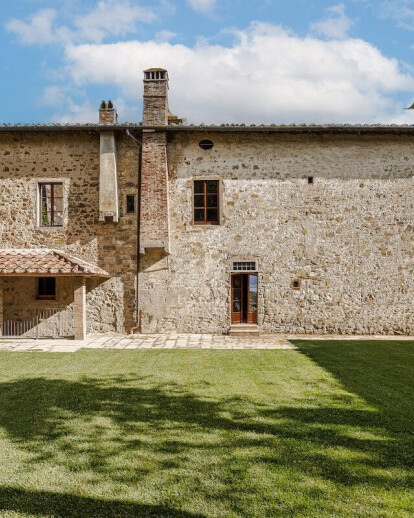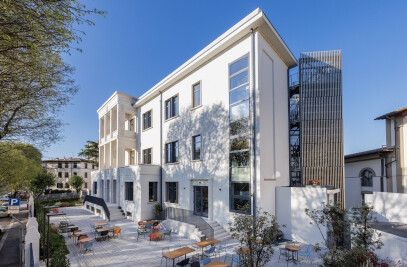In the heart of Tuscany, Pierattelli Architetture has designed the Pieve Aldina boutique hotel belonging to the Domaine de Fontenille group: a contemporary renovation of a twelfth-century episcopal complex
In Radda in Chianti, an ancient town that has hardly changed over the centuries, set among gently rolling hills, olive groves and vineyards, the architects have created a jewel of a hotel that is part of the Relais & Châteaux collection, with a project that enhances and preserves the original buildings and local characteristics
Preserving the charm of history, rediscovering the soul of a place and its essential character. Pierattelli Architetture has designed the new boutique hotel Pieve Aldina, part of the French group Domaine de Fontenille, which stands next to the medieval village of Radda in Chianti, along the Chiantigiana, the ‘wine road’ that connects Florence and Siena. Surrounded by 40 hectares of olive groves, Pieve Aldina is part of the prestigious Relais & Châteaux collection and has 22 rooms and suites, an outdoor swimming pool, spa and menu prepared by chef Flavio Faedi, who successfully combines haute cuisine and local dishes.

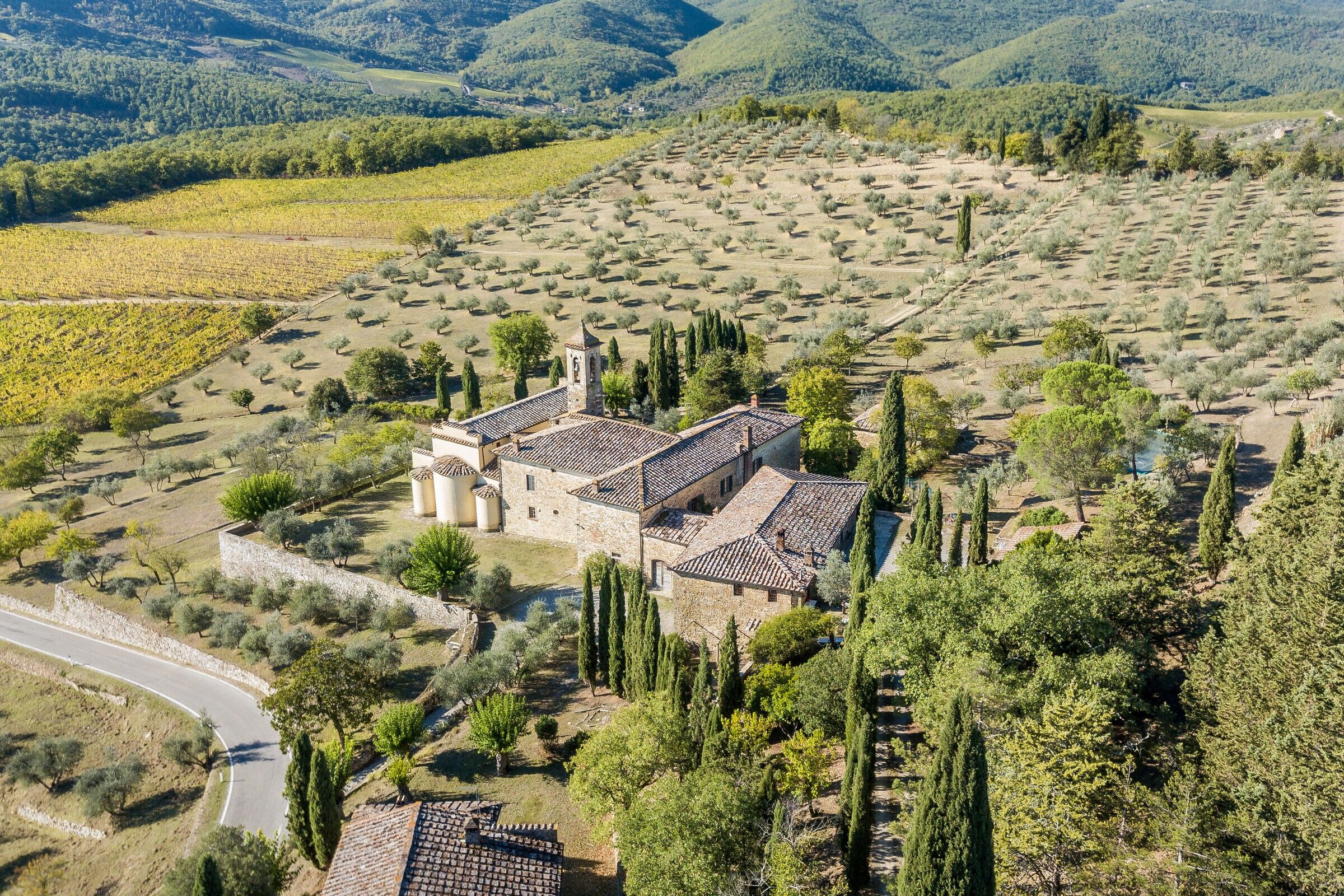
Pierattelli Architetture's project stems from the conservative renovation of a former episcopal complex made up of three buildings that date back to the twelfth century and cover an area of 2,000 square metres. The main aim was to convey to today’s visitors the identity and uniqueness of an ancient location that has hardly changed over the centuries, where time seems to have stopped. A haven of peace and quiet that in 1043 the Count of Piancaldoli offered as a gift to his wife Aldina Ubaldini, after whom the hotel is now named.
Irregular façades in pietraforte sandstone, thick walls, sturdy timber frames, terracotta Tuscan roof tiles, porticoes and internal courtyards, high ceilings on the lower floors and lower sloping ones on the upper level: the three buildings reflect the typical elements of a traditional Tuscan farmhouse. One of these, the summer residence of the bishops of Siena, has been listed by the Italian Ministry of Culture as part of Italy's historical heritage, while the small, adjacent, tenth-century parish church, the Pieve di Santa Maria Novella, is one of the most important examples of Romanesque architecture in Tuscany. Respectful of local character, Pierattelli Architetture's project has valorised and conserved the original structures and essence of this area, focusing on recovery of the existing buildings with additions in a contemporary key.
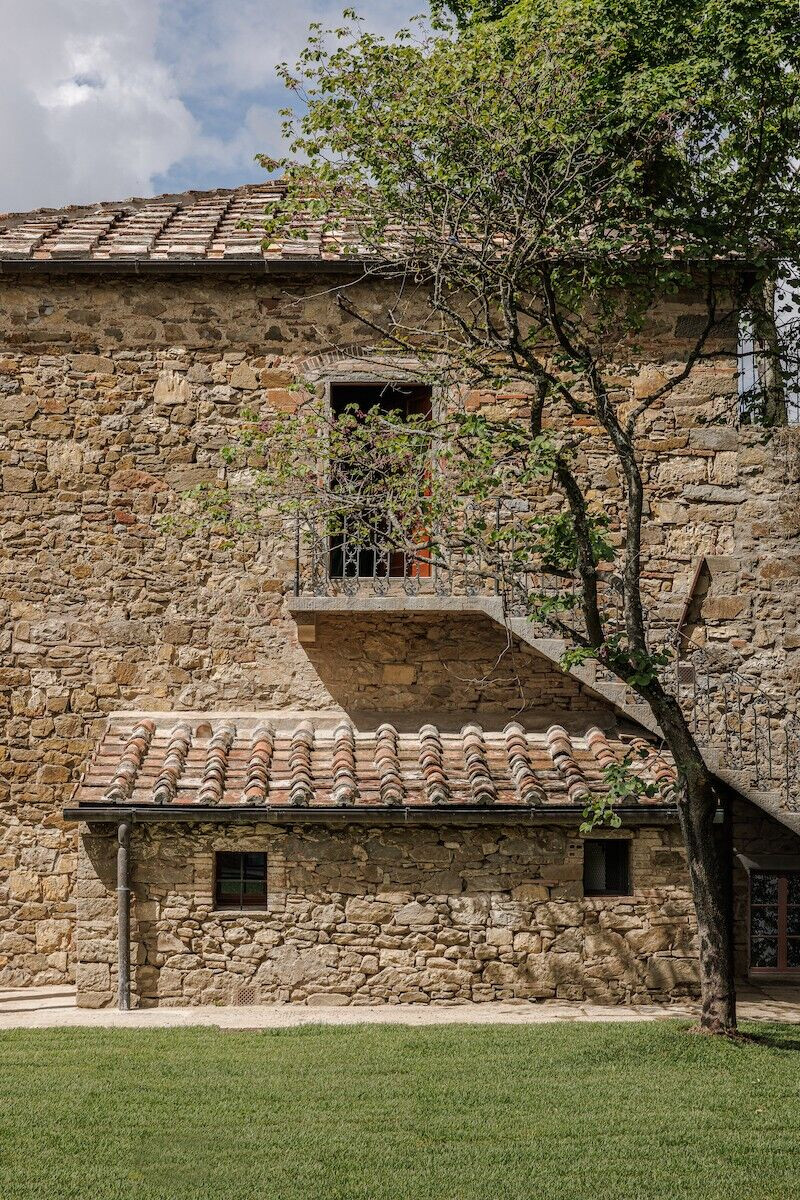
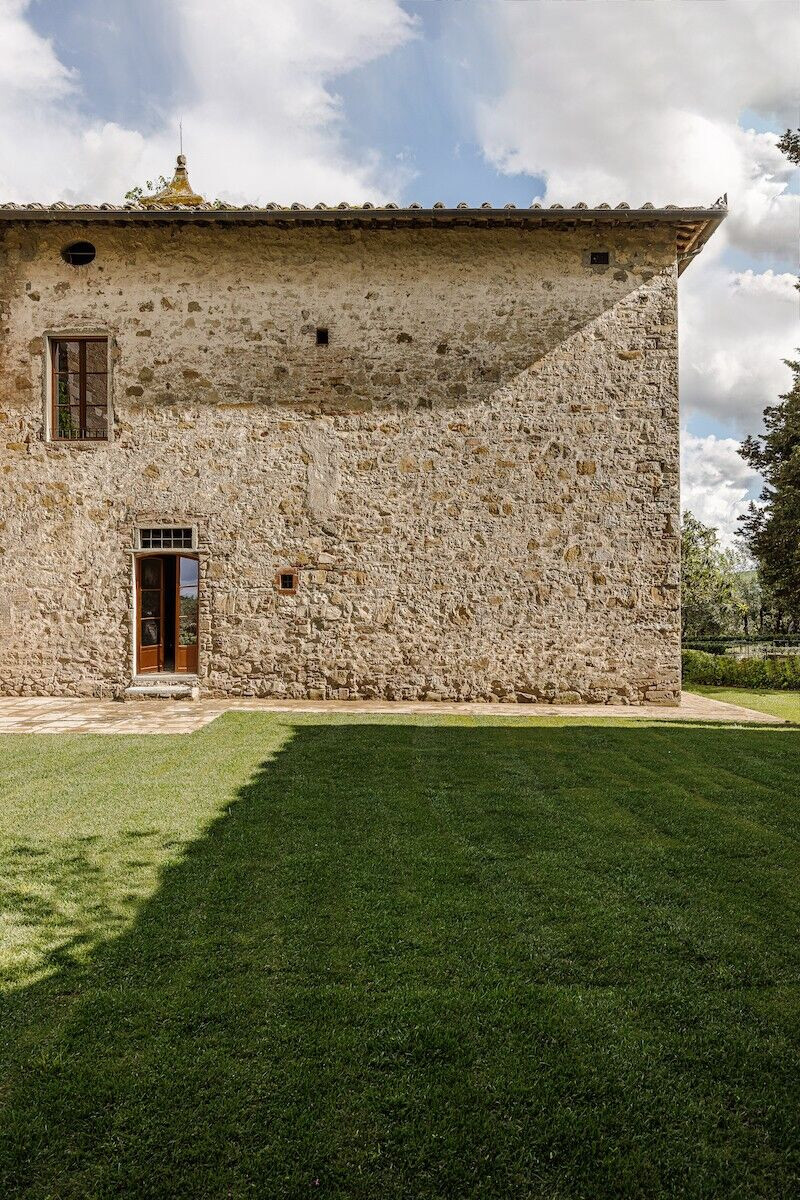
The 22 rooms of the boutique hotel have been created inside these three buildings and the main one, adjacent to the church known as "la Pieve", has been declared a listed building by the Superintendency of Archaeology, Fine Arts and Landscape. Scrupulously carried out this project by Pierattelli Architetture has maintained and restored the original interior wall decorations on the piano nobile. A stone staircase leads to the first floor, a large space with a coffered wooden ceiling that adds to the warm atmosphere and natural lime walls decorated with neoclassical frescoes that lend elegance and refinement. Like "la Pieve", the other two buildings, "Studiolo" and "Conventino", are also enhanced by wonderful wooden ceilings and windows that look out onto unspoilt green countryside.
The interiors are a fusion of stylistic purity and contemporary taste, the furnishings sober with clean lines, and a predilection for earthy colours such as sage green, as well as variations on a theme of beige, white and brown, while the materials chosen are typically local, such as terracotta for the floors, lime plaster for the walls, wood for the fixtures and painted skirting boards: preserved archetypes of Tuscan rural architecture. The walls are given a sophisticated touch by the works of Parisian artist Dune Varela, printed on slabs of Carrara marble, and the herbaria of Stéphanie Montaigu, who pastes images of flowers and ancient sculptures onto the yellowed pages of old books.

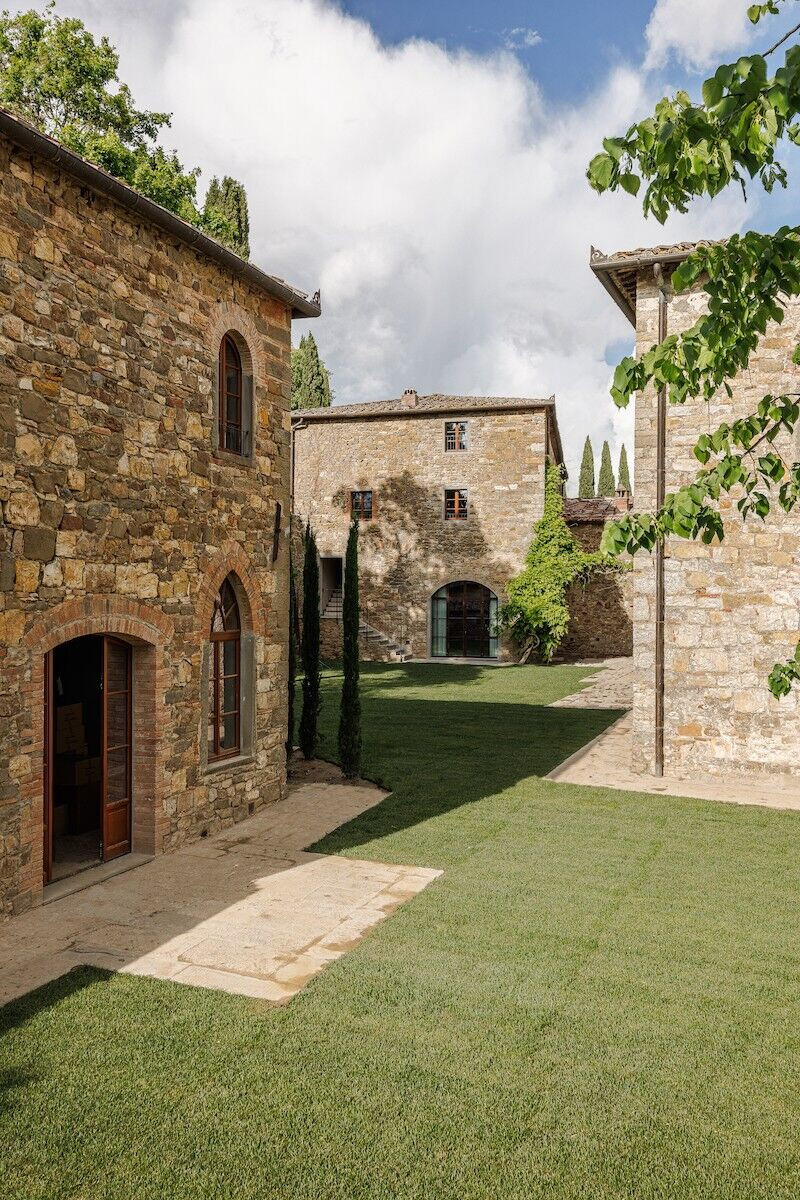
The outhouses, where farming tools were once kept and olives were left before pressing, have been transformed into "Le Rondini" restaurant: 100 square metres that play with a balance of old and new, featuring a fabulous vaulted ceiling in iron and terracotta, a traditional material also used for the floor in shades of beige, and contemporary notes such as track lighting. Here Pierattelli Architetture has designed a large opening in the wall that allows diners to watch the chefs at work in the kitchen, as well as a new arched passageway onto the internal courtyard to open the windows and eat outside in fine weather, with tables on the lawn or under the large wisteria. Equipped with two massage rooms, a sauna, Turkish bath and emotional shower, the spa has everything guests need to make their stay even more relaxing and all the windows in this amazing setting look out over a seemingly neverending landscape of countryside and hills.
Outside, guests can relax by the pool and admire rambling roses and lemon trees, an enormous wisteria that winds from roof to roof, dry-stone walls and box hedges, and large eighteenth-century terracotta decorated vases, or stroll through the surrounding woods and farms, rediscovering the pleasure of ancient rituals and life governed by the slow pace of nature. No boundary fences have been built, as is customary in Tuscany, to offer that sense of freedom that makes guests feel part of the landscape.
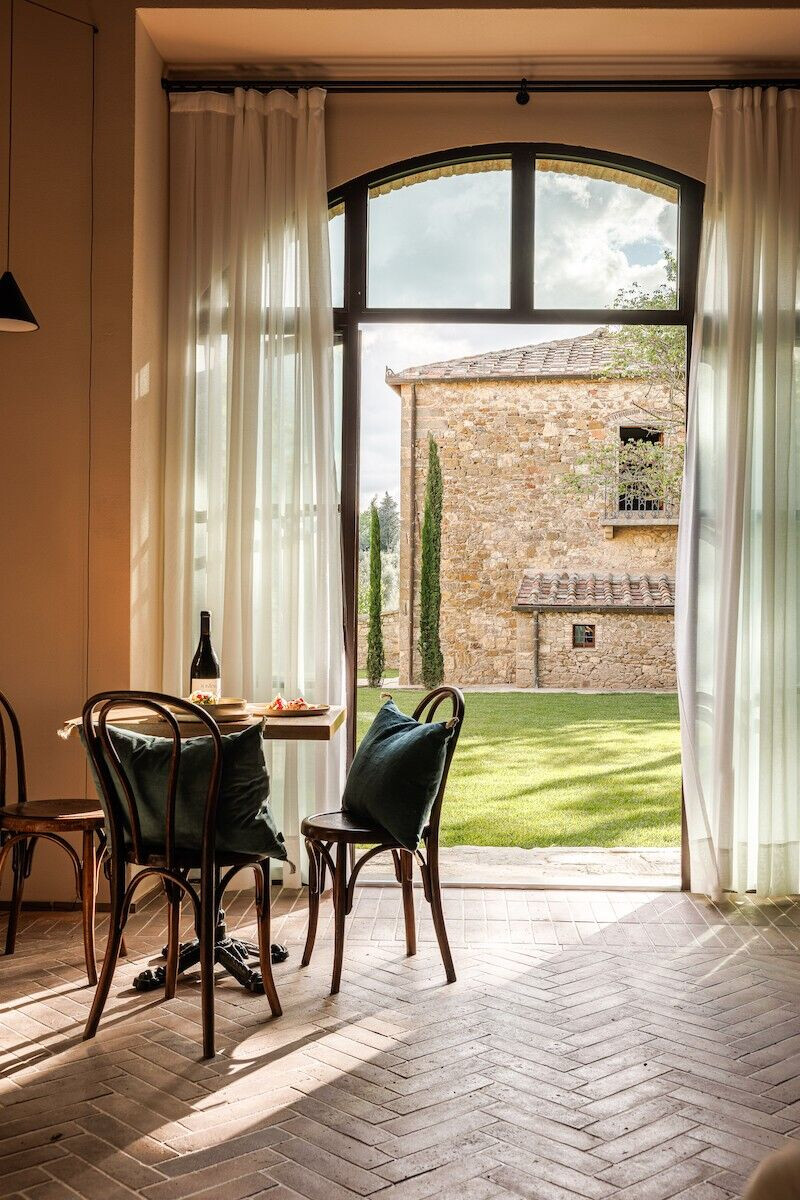

Team:
Architect: Pierattelli Architetture
Design: Pieve Aldina
Photography: Iuri Niccolai


Material Used:
1. Floors: Manetti Gusmano & Figli Terracotta
2. Bathroom Tiles: Marazzi
3. Sanitary Ware: Ceramica Cielo And Geberit
4. Shower Cubicle: Rare
5. Tapware: IB
6. Interior Lighting Engineering: Flos
7. Exterior Lighting Engineering: Platek
8. Wardrobes: Lema
9. Interior Furnishings: Gervasoni
10. Bespoke Interior Furnishings: Ab Arredamenti Bianchi, Mg Sedie&Tavoli
11. Outdoor Furnishings: Tectona
12. Curtains: Moncini Tendaggi
13. Restaurant Kitchen: Zanussi
14. Door Systems: Salto

